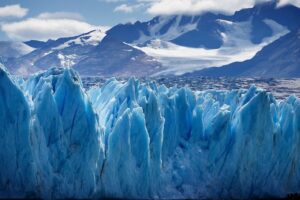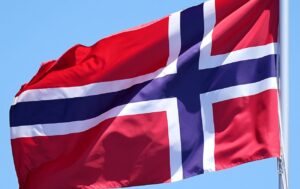
The dollar is weakening against the euro and is recovering against the yen after a sharp drop against almost all world currencies the day before, triggered by data on a significant weakening of inflation in the United States.
As it became known on Thursday, consumer prices (CPI) in the United States rose by 7.7% in October against the same month last year after an increase of 8.2% in September. Thus, inflation slowed to its lowest since January and was well below market forecasts.
The data may affect the policy of the U.S. Federal Reserve (Fed), which is aggressively raising interest rates in an attempt to curb inflation.
The head of the Federal Reserve Bank (FRB) of Philadelphia, Patrick Harker, already spoke in favor of slowing further rate hikes.
“In the coming months, in light of the cumulative tightening (of QE – IF) already achieved, I expect the pace of rate hikes to slow down as we get closer to sufficiently restrictive policy,” Harker said during a speech at an event in Philadelphia.
The ICE-calculated index, which shows the U.S. dollar’s performance against six currencies (euro, Swiss franc, yen, Canadian dollar, pound sterling and Swedish krona), is down 0.25 percent. The day before, the indicator was down 2%.
The euro/dollar pair is trading at $1.0218 by 7:55 a.m. Ksk, versus $1.0209 at the close of Thursday’s session, with the euro strengthening 0.1%.
The dollar/yen is up 0.4% at 141.57 yen, up from 140.97 yen at the end of last session.
The pound is changing little and is trading at $1.1716 compared to $1.1715 at the close of previous trading.
The mainland yuan rose 1.1 percent to 7.1089 yuan per $1, renewing a four-week high.
The Australian dollar is up 0.5 percent at a seven-week high of $0.67, despite statements by Australia’s Deputy Central Bank Governor Michelle Bullock that the country’s interest rate is likely to continue rising.

Oil prices are rising moderately on Friday morning after the first rise in four sessions the previous day, caused by a sharp weakening of the dollar.
The cost of January futures for Brent on London’s ICE Futures Exchange stood at $93.92 a barrel by 7:05 a.m. Ksk, $0.25 (0.27%) above the previous session’s closing price. Those contracts rose $1.02 (1.1%) to $93.67 a barrel at the close of trading on Thursday.
The price of WTI futures for December at electronic trades on the New York Mercantile Exchange (NYMEX) is $86.72 per barrel by that time, which is $0.25 (0.29%) above the final value of the previous session. The contract rose by $0.64 (0.8%) to $86.47 per barrel on Thursday.
The index calculated by ICE, which shows the dollar’s dynamics against six currencies (euro, Swiss franc, yen, Canadian dollar, pound sterling and Swedish krona), fell about 2% the previous day after data on a sharp slowdown in U.S. inflation. U.S. consumer prices (CPI) rose 7.7% in October compared to the same month a year earlier after rising 8.2% in September. Thus, inflation slowed to its lowest since January and was well below market forecasts.
“The consumer price index came in below forecasts, and that eased some of the negative factors for oil, such as the strong dollar and fears of more aggressive Fed rate hikes,” said Price Futures Group senior analyst Phil Flynn.
“At the same time, uncertainty over China’s coronavirus policy persists,” the expert added. – It seems to me that once we see signs that the Chinese economy is starting to open up, that will radically change the dynamics and push oil prices up.”

UNESCO has published data on the status of fifty glaciers included in the World Heritage List. And these data clearly indicate their accelerated melting.
Glaciers in the Dolomites, the Mont Perdu in the French Pyrenees, the Yellowstone and Yosemite glaciers in the United States, the glaciers of Africa on the UNESCO list – these are some of those that will disappear by 2050, experts say.
They estimate that even if you stop emitting CO2 and take radical protective measures, such as those being discussed at UN climate conferences, such as the COP27 world meeting in Egypt in November, the melting seems already irreparable.
“The situation is bad for mountain glaciers. Worse than for the polar ice caps of Greenland and Antarctica,” says Marie Cavite, a glaciologist at the Catholic University of Leuven in Belgium.
She explains that in the optimistic scenario for all the world’s glaciers by 2100, the estimated loss ranges from 22% to 57% “depending on the regions and the measures taken.” “But if you have the glaciers of the Alps in mind specifically, 94% of them will be gone by 2100,” says the glaciologist.
The heat of 2022 was particularly killer for these alpine glaciers, she says. Temperatures in the summer, as elsewhere in Europe, were much higher than usual. There was little snow cover in the spring, whereas snow is a protective blanket for glaciers: before the ice starts to melt, the snow has to melt.
And in addition to this, the third negative factor, very specific to the Alps, Marie continues, is the traces of a sandstorm from the Sahara that reached Europe. “Sand, unlike snow, is dark, and the ice heats up faster underneath it,” notes the glacier researcher. The confluence of these circumstances this year, she explains, is what led to this unprecedented melting.

The 1,570 Starlink system terminals handed over by Poland have already arrived in Ukraine, Deputy Prime Minister and Minister of Digital Transformation of Ukraine Mikhail Fedorov said.
“This is especially important now, because there are problems with electricity due to Russian shelling. When the light disappears, mobile operators and Internet providers do not work in some regions. So let’s equip the country with public WI-FI hotspots where people can be connected,” Fedorov wrote in a telegram on Thursday.
He noted that some of the terminals will be given to civilian administrations in the de-occupied territories. “In addition, we will provide Starlinks “Ukrzaliznytsia”, so that passengers and employees have a stable mobile communication and Internet,” the minister stressed.
Fedorov specified that since the beginning of the full-scale invasion with the assistance of the Ministry of Digital from donors and partners Ukraine has received more than 20 thousand Starlink terminals.
“Of these, 5 thousand with the support of the Polish government. Now another 1,570 terminals from our strategic partners will help Ukraine stay connected. I thank the Polish government for its constant support and ZAMMLER group of logistics companies for the free delivery of the new batch of terminals to Ukraine,” summed up the head of the Mincifra.

The Norwegian government is preparing to invest about NOK 1.5 billion in the UK-led International Fund for Ukraine.
According to the Norwegian government’s website, the investment comes in addition to the NOK 400 million that Norway previously donated to the fund. The funding was used to purchase drones, drone suppression equipment and artillery shells.
The new donation is part of the NOK 3 billion that the Norwegian government will provide for military support to Ukraine in 2022.

The Netherlands will invest 100 million euros in the recently established International Foundation for Ukraine (IFU) to finance military equipment for Ukraine, the country’s Defense Ministry said.
According to the ministry’s website, this was announced by Dutch Defense Minister Kaisa Ollongren during a visit to the UK.
The IFU money is being used to purchase equipment directly from manufacturers to ensure its quickest possible delivery to Ukraine.
“If Russia stopped fighting, there would be no war. If Ukraine stopped fighting, there would be no Ukraine. International support for Ukraine remains vital,” the minister said.
The first industry contracts are expected to be signed by the end of this year. The first deliveries are expected in the first half of next year.
In addition to the Netherlands, other participants in the fund are its initiators Great Britain, Denmark and Norway.